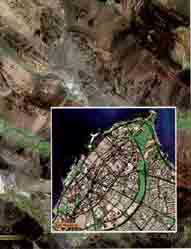Document Type : Research Paper
Author
Member of Faculty, Islamic Azad University of Shahr-e Ray
Abstract
Geomorphology is one of the branches of geosciences which is related to forms of terrain (topographic reliefs) of the Earth's Crust. The contact area studied by geomorphology is affected on the one hand by internal forces such as tectonic forces and volcano, and on the other by exogenous forces, i.e. erosion, which originate in the hydrosphere of the atmosphere. Geomorphology forms one of the largest natural units which has a very close relationship with other natural units. Identifying the principles of these relationships in order to understand them and consider and utilize them in developmental plans is one of the goals of geomorphology. As the term “geomorphology” suggests, the study of landforms and their changes and changing factors are among the topics and objectives of this science.
In the morphogenetic domain of Sahand, important changes in topographic shapes, which are among the prominent features of this region, can be caused either by sequential function of internal and external factors or simultaneous operation of these forces, hence in this study attention has been paid to each of the internal and external factors. Clear effects of these changes can now be observed in the present appearance of Sahand.
The study of natural environments and environments occupied by human beings is carried out by many sciences in order to exploit them more and more correctly. In this study, a part of this objective has been fulfilled by relying on Sahand geomorphologic study to identify the factors affecting evolution and morphogenesis.
The content of this research does not at all include all the issues of the Sahand Mountain Range, and it can not be said that this study ends here, but there are many discussions concerning the high mountainous regions and the low basin areas that remain and require further studies.
Today, due to the increasing number of population, in order to use natural areas ever more, as well as create new living environments and recreational places for humans, mountainous regions (in spite of the many difficulties) should be paid attention so that they become able to respond to some of the economic and residential needs.

